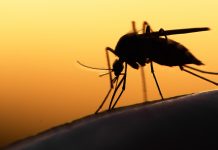
A new study has shown that lower daily temperatures led to higher COVID-19 infection rates in 50 Northern hemisphere countries.
Understanding of the impact of seasonal temperature changes on transmission of the COVID-19 virus is currently limited, but it is an important factor in reducing transmission rates. Researchers at the University of Louisville‘s Christina Lee Brown Envirome Institute, the Johns Hopkins University School of Medicine, the US Department of Defense Joint Artificial Intelligence Center and others, have carried out a study that compared daily low temperature data and logged cases of COVID-19 in 50 countries in the Northern Hemisphere between January and April 2020. The results showed that as temperatures rose, the rate of new cases of COVID-19 decreased.
The research has been published in the journal PLOS ONE.
The impact of temperature on transmission
The researchers analysed data from early in the COVID-19 pandemic, meaning that the results were obtained without significant influence by lockdowns, masking, or other social efforts to contain the virus. The analysis showed that between 30° and 100° Fahrenheit, a 1° Fahrenheit increase in daily low temperature was associated with a 1% decrease in the rate of increase in COVID-19 cases, and a 1° decrease in temperature was associated with an increase in that rate by 3.7%.
The researchers concluded that summer months are associated with slowed transmission of COVID-19, as in other seasonal respiratory viruses.
Aruni Bhatnagar, PhD, co-author and director of the Brown Envirome Institute, said: “Although COVID-19 is an infectious disease that will have non-temperature dependent transmission, our research indicates that it also may have a seasonal component. Of course, the effect of temperature on the rate of transmission is altered by social interventions like distancing, as well as time spent indoors and other factors. A combination of these factors ultimately determines the spread of COVID-19.”
The data also indicates that the correlation between temperature and transmission was much greater than the association between temperature and recovery or death from COVID-19.
Adam Kaplin, MD, PhD, of Johns Hopkins, first author of the study, said: “This understanding of the SARS-CoV-2 temperature sensitivity has important implications for anticipating the course of the pandemic.
“We do not know how long the currently available vaccines will sustain their benefits, nor what the risks are of new variants developing over time if the Northern and Southern Hemispheres continue to exchange COVID-19, back and forth across the equator, due to their opposing seasons. But it is reasonable to conclude that this research suggests that, like other seasonal viruses, SARS-CoV-2 could prove to be extremely difficult to contain over time unless there is a concerted and collaborative global effort to work to end this pandemic.”
























